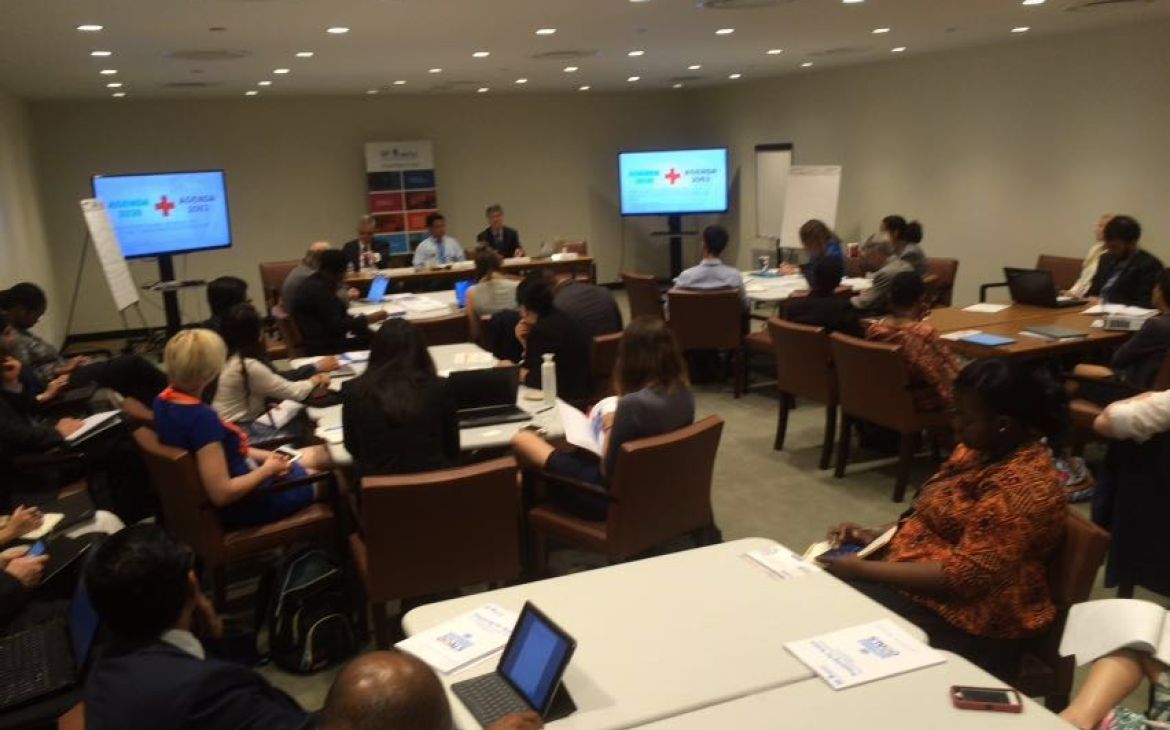14 July 2016, New York, USA – The SDGs and the Paris Agreement hold a great promise, but how do we turn these aspirational visions into reality? UNITAR’s learning session held on the occasion of the HLPF on Thursday sought to address this issue by focusing on the new types of planning tools and nationally-grown actionable strategies to turn the SDGs, climate and regional commitments into reality. Facilitated by UNITAR’s Executive Director Nikhil Seth, the session featured Jeffrey Sachs, H.E. Amb. Kamau of Kenya, Halldór Thorgeirsson from UNFCCC, and experts from the World Resources Institute.
The purpose of the session “Harmonizing global, regional and national commitments to implement the SDGs” held on the sidelines of the HLPF – the main forum for follow-up and review of progress on the SDGs - was to strengthen participants’ knowledge and skills related to integrated planning solutions.
Opening the session, Nikhil Seth has highlighted that the SDGs will need to serve the purpose of addressing very specific national and local problems in every country. Prof. Jeffrey Sachs, a world-renowned economist who is also the Chair of the Advisory Council on Capacity for the 2030 Agenda, kicked off the morning by talking about the revival of domestic planning to transform the aspirational goals into specific, measurable and costed plans and to provide a foundation for strengthened resource mobilization from domestic and international sources. He stressed the importance of the longer-term horizon for policy-making, of learning from successful planning practices in health to replicate in other critical SDG areas and of cross-sectoral approaches to budgeting. “Three key steps will be required to achieve the SDGs: serious domestic planning, serious domestic resource mobilization, and serious international resource mobilization”.
The nationally determined contributions (NDCs) - while not sufficient to meet the below 2 degrees Celsius objective – are an example of nationally-grown solutions to be supported by concrete strategies. They will contribute to the implementation of the SDGs through multiple connections between the global goals and climate change actions. Discussing the objectives, Halldór Thorgeirsson, Director for Strategy at the UNFCCC Secretariat noted, “It is not about mobilizing billions, it is about spending them wisely”.
There is a need to reorient our planning processes around the SDGs and focus on accelerators be it political leadership, science and technology or others. These were important points emphasized by Ambassador Kamau. “Changes need to take place in the way in which we invest, train people, run our local governments. This is where UNITAR can have a huge impact”, he noted. Supporting the statement, Nikhil Seth added that we need to invest more into solutions-oriented science for public goods and development: “Curiosity-driven science drains a lot of resources but not necessarily contributing to solving practical development issues”.
The session closed with a mini-training delivered by the World Resources Institute and UNITAR. Participants had a chance to practice their skills for assessing the effectiveness of different integrated planning instruments and institutional arrangements. Building on their own experiences and case studies from the work of the WRI, they worked in groups to develop and apply sets of evaluation criteria aligned with the vision and principles of the 2030 Agenda. This first learning session will be followed by a Friday session on the sidelines of the HLPF, that will focus on national reviews and M&E systems for the SDGs to be held in Room E, UN Headquarters, from 15:00 to 17:30.
If you have any further questions, please contact elena.proden@unitar.org


